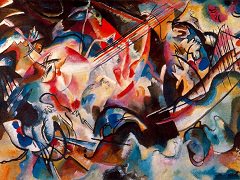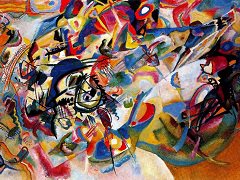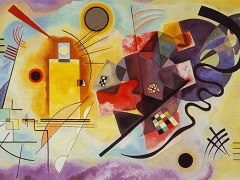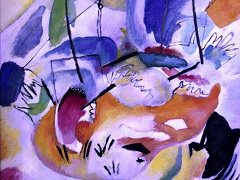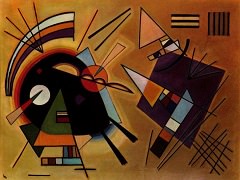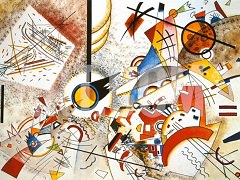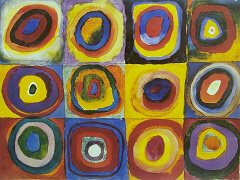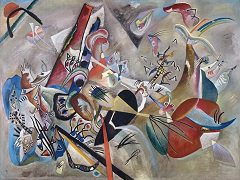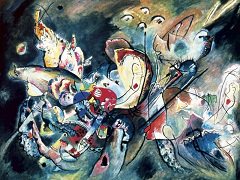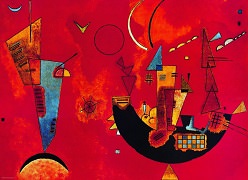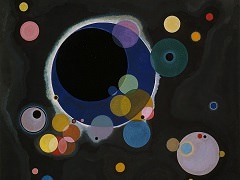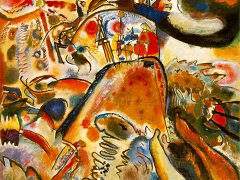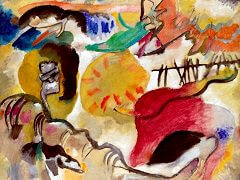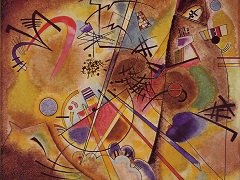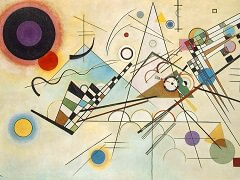Two Green Points, 1935 by Wassily Kandinsky
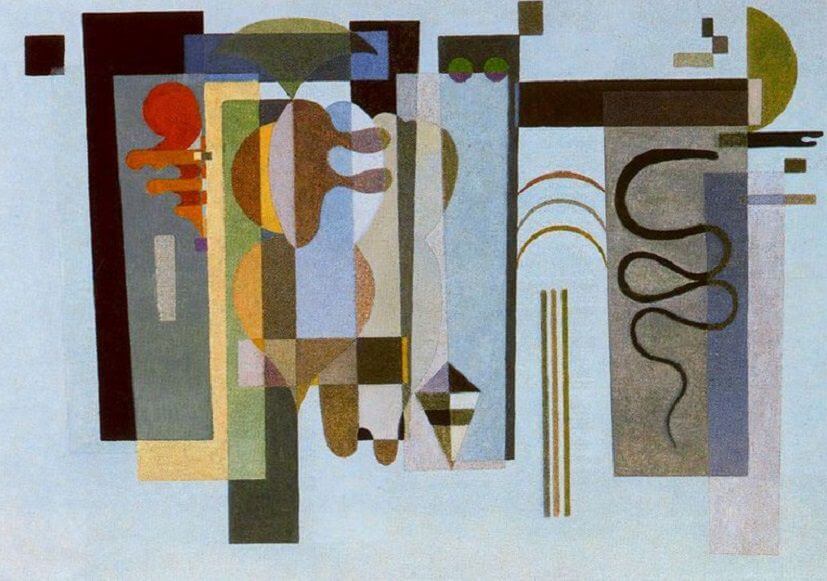
This painting is a striking example of Kandinsky's use of the game of hide-and-seek in his work. The very title, Two Green Points, is more of a metonymy than a descriptive apellation: the green points are hardly detectable, yet their artistic function is pivotal to the balance of the composition. Indeed, Kandinsky's titles are nearly always comparable to a maze in which the viewer has to search for their hidden meaning. Perhaps this ambiguity was intended by the artist to be an invitation to look more carefully into a painting. Moreover, Kandinsky's method of ending his works was a significant expression of his own personality.
On May 4, 1904, Kandinsky wrote to Gabriele Miinter: "I hate people to perceive what I truly feel." He expressed a similar sentiment in a less personal way in his Reminisences, where he explained his inclination toward the hidden and concealed. Both reactions, the discomfort that he felt when his privacy was disturbed and the suppression of he true content of his paintings, became more and more obvious after he undertook the first steps toward abstract art.
These tendencies have correctly been cited in the attempt to find a psychological motivation for Kandinsk's basic attitude toward art as the expression of his personality. They may indeed have been the major impulses in creation of abstract painting, with its cryptic iconography.

